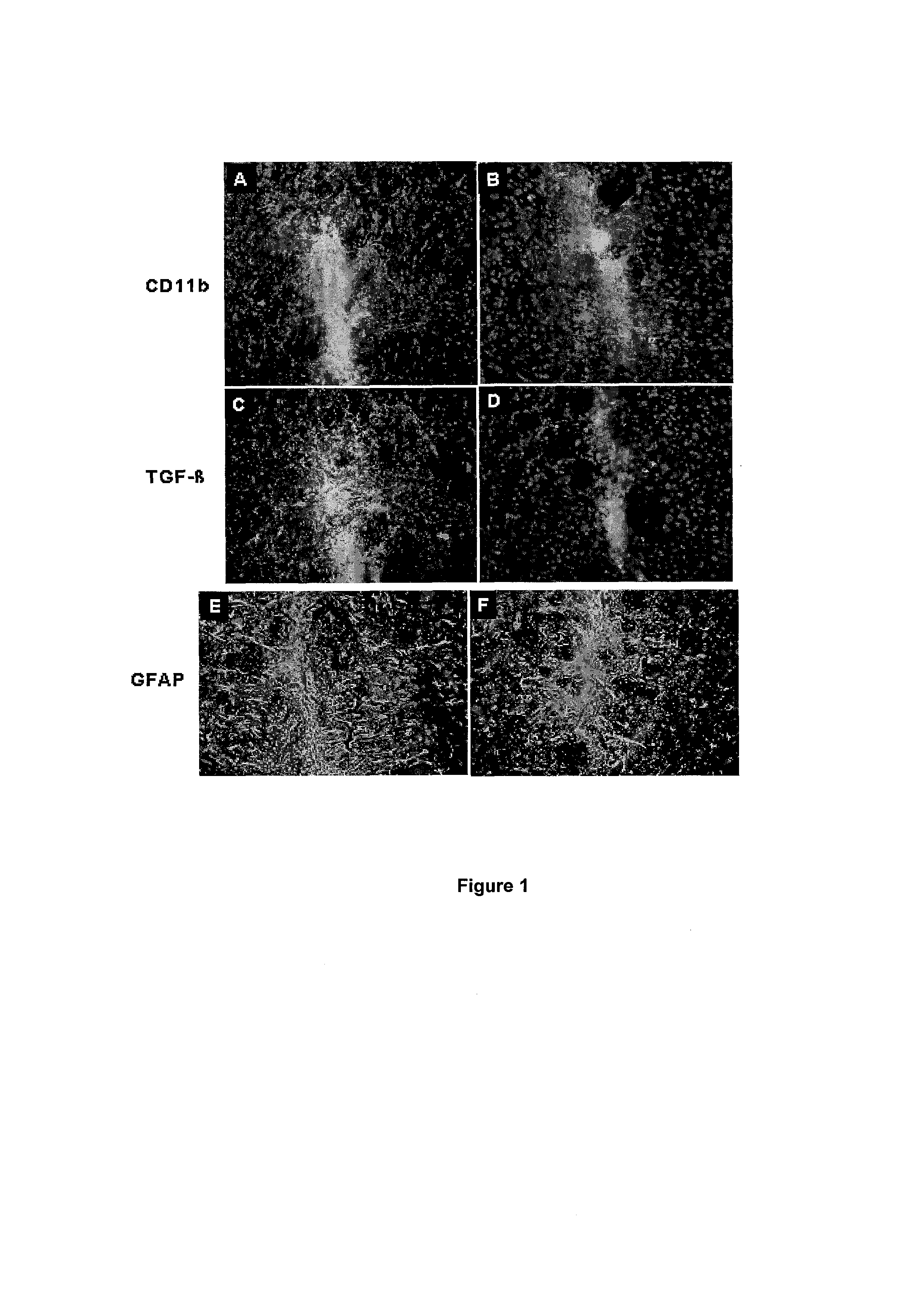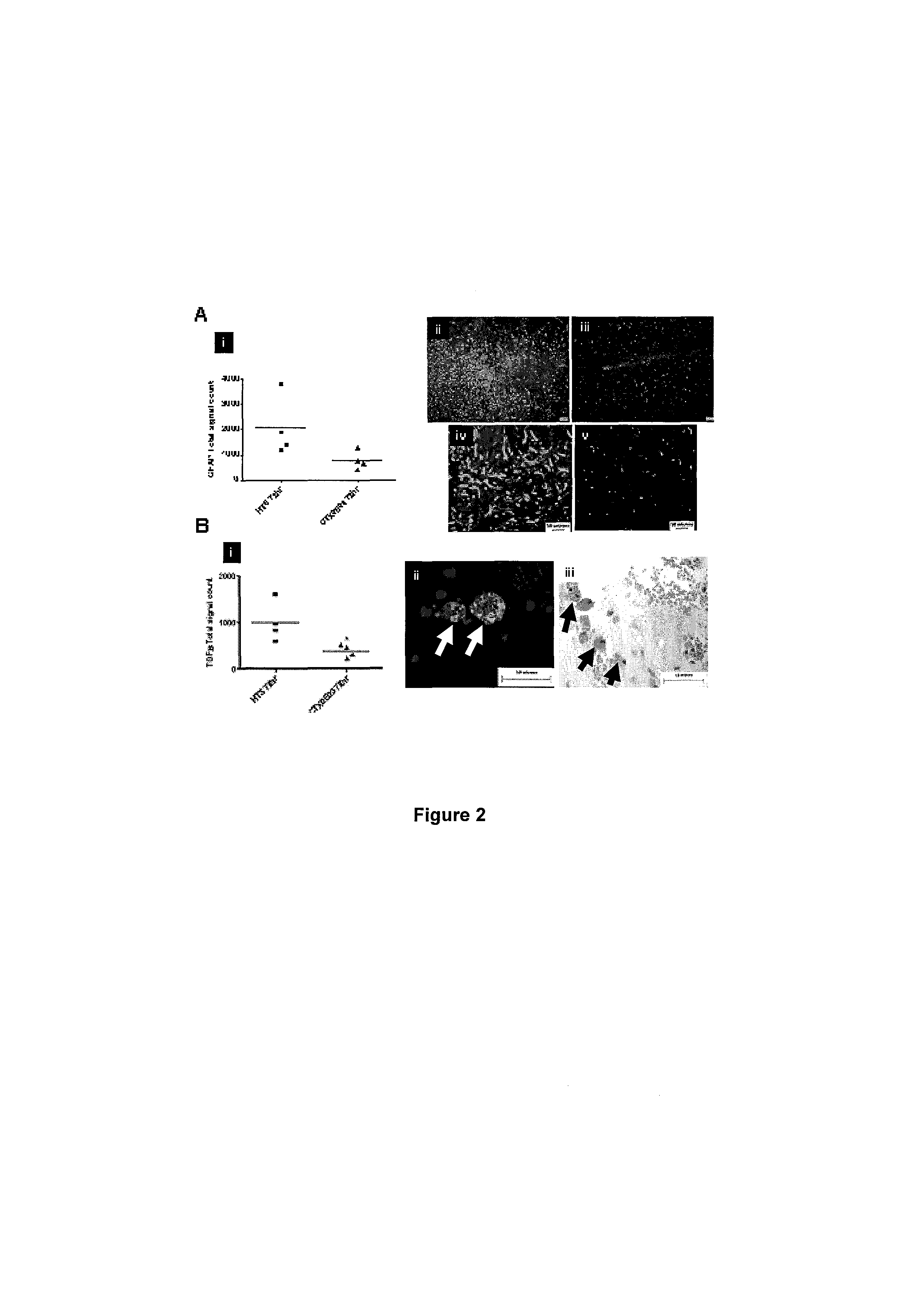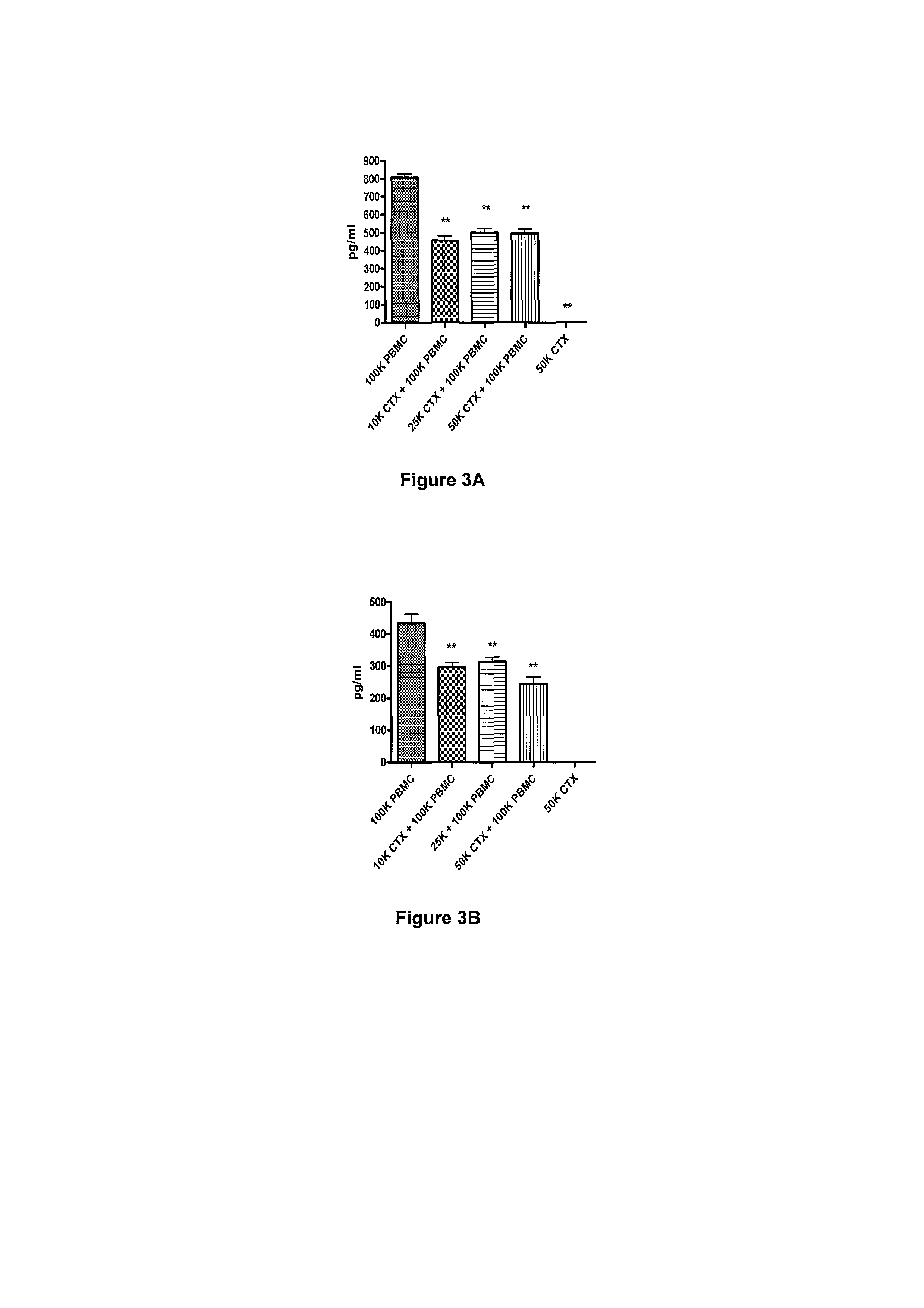Therapeutic Use of Neural Stem Cells
a neural stem cell and stem cell technology, applied in the field of neural stem cell therapy, can solve the problems of depressive symptoms that may actually become more severe, disrupted day to day life of sufferers, and limited efficacy and tolerability,
- Summary
- Abstract
- Description
- Claims
- Application Information
AI Technical Summary
Benefits of technology
Problems solved by technology
Method used
Image
Examples
example 1
CTX0E03 Cells Reduce Host Astrocvte and Microglia Responses in the Mouse Brain
[0047]Adult male BalbC mice were implanted with CTX0E03 cells or control vehicles in the striatal region of the brain. 7 days post grafting brains were collected and subjected to histological analysis. Fluorescence immunohistochemistry, using specific markers to detect astrocytes (Glial fibrillary acid protein, GFAP) and microglia (CD11 b, TGF-β) was performed.
[0048]The results are presented in FIGS. 1A-F. As can be seen, CTX0E03 treatment afforded a reduction in GFAP, CD11 b and TGF-β expression in the striatum, at the site of implantation, compared with vehicle control-treated brains.
example 2
CTX0E03 Cells Reduce Host Astrocvte and Microglia Responses in the Mouse Brain
[0049]Adult male BalbC mice were implanted with CTX0E03 cells, or control vehicles in the striatal region of the brain. At 4, 24, 48, 72 hours and 7 days post-implantation, brains were collected and subjected to histological analysis. Fluorescence immunohistochemistry, using specific markers to detect astrocytes (GFAP) and microglia (TGF-β) was performed. Host astrocytes and microglia responses were quantified by measuring GFAP and TGF-β fluorescent signals by image analysis.
[0050]The GFAP host responses are illustrated in FIG. 2A. CTX0E03 treatment reduced GFAP host responses at 72 hours post-implantation, compared with vehicle-treated brains. The reactive morphology demonstrated by vehicle treated brains at this time point was not observed in CTX0E03-treated brains.
[0051]The microglial host responses are illustrated in FIG. 2B. CTX0E03 treatment significantly reduced TGF-β host responses at 72 hours post...
example 3
CTX0E03 Cells Significantly Reduce the Production of IFN-γ when Cultured with Lipopolysaccharide (LPS)—Stimulated Mixed Human Peripheral Blood Mononuclear Cells (PBMCs) Compared with Control PBMCs
[0052]Mitomycin treated (growth arrested) or differentiated (growth factors removed) CTX0E03 cells were cultured in 96 well plates with LPS stimulated human PBMCs for 24 hours at 37° C. After 24 hours, culture plates were centrifuged at 1500 rpm and the cell supernatants analysed for interferon-gamma (IFN gamma) by ELISA.
[0053]Mitomycin treated CTX0E03 cells significantly reduced PBMC IFN-γ production, but there was no dose-dependent effect; these results are shown in FIG. 3.
[0054]Differentiated CTX0E03 demonstrated a significant and dose-dependent reduction of PBMC IFN-γ production, with complete abrogation of the response as demonstrated with CTX0E03 at 25K and 50K (see FIG. 4).
PUM
| Property | Measurement | Unit |
|---|---|---|
| Therapeutic | aaaaa | aaaaa |
| Disorder | aaaaa | aaaaa |
Abstract
Description
Claims
Application Information
 Login to View More
Login to View More - R&D
- Intellectual Property
- Life Sciences
- Materials
- Tech Scout
- Unparalleled Data Quality
- Higher Quality Content
- 60% Fewer Hallucinations
Browse by: Latest US Patents, China's latest patents, Technical Efficacy Thesaurus, Application Domain, Technology Topic, Popular Technical Reports.
© 2025 PatSnap. All rights reserved.Legal|Privacy policy|Modern Slavery Act Transparency Statement|Sitemap|About US| Contact US: help@patsnap.com



